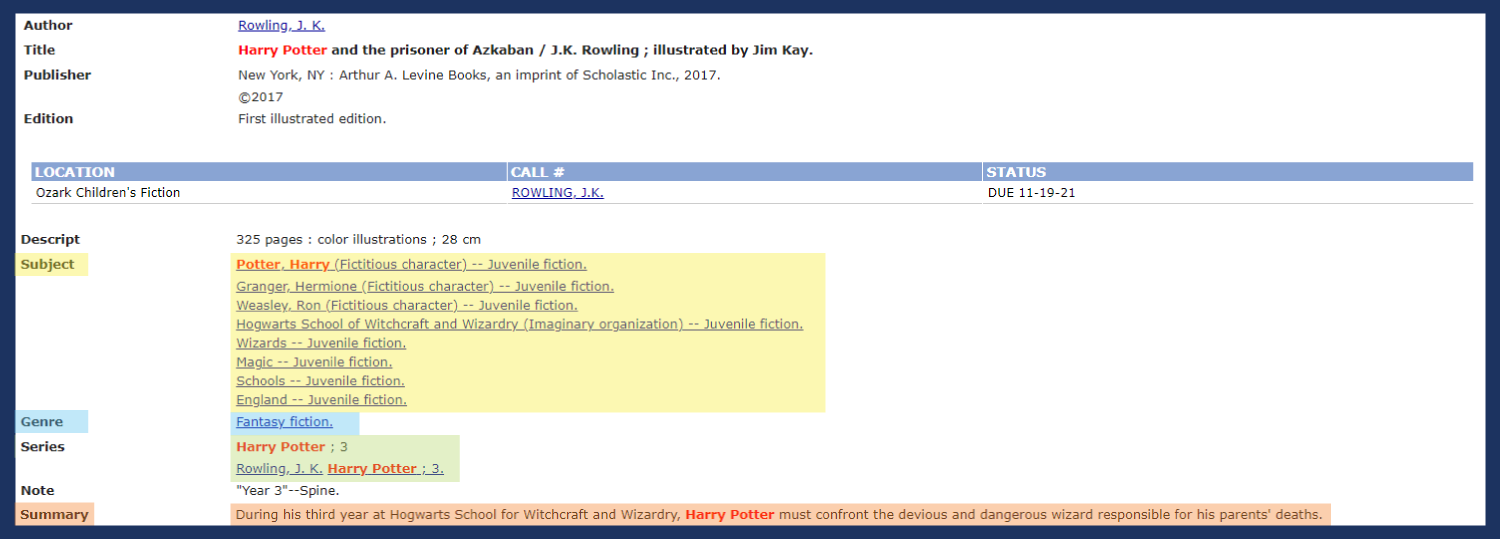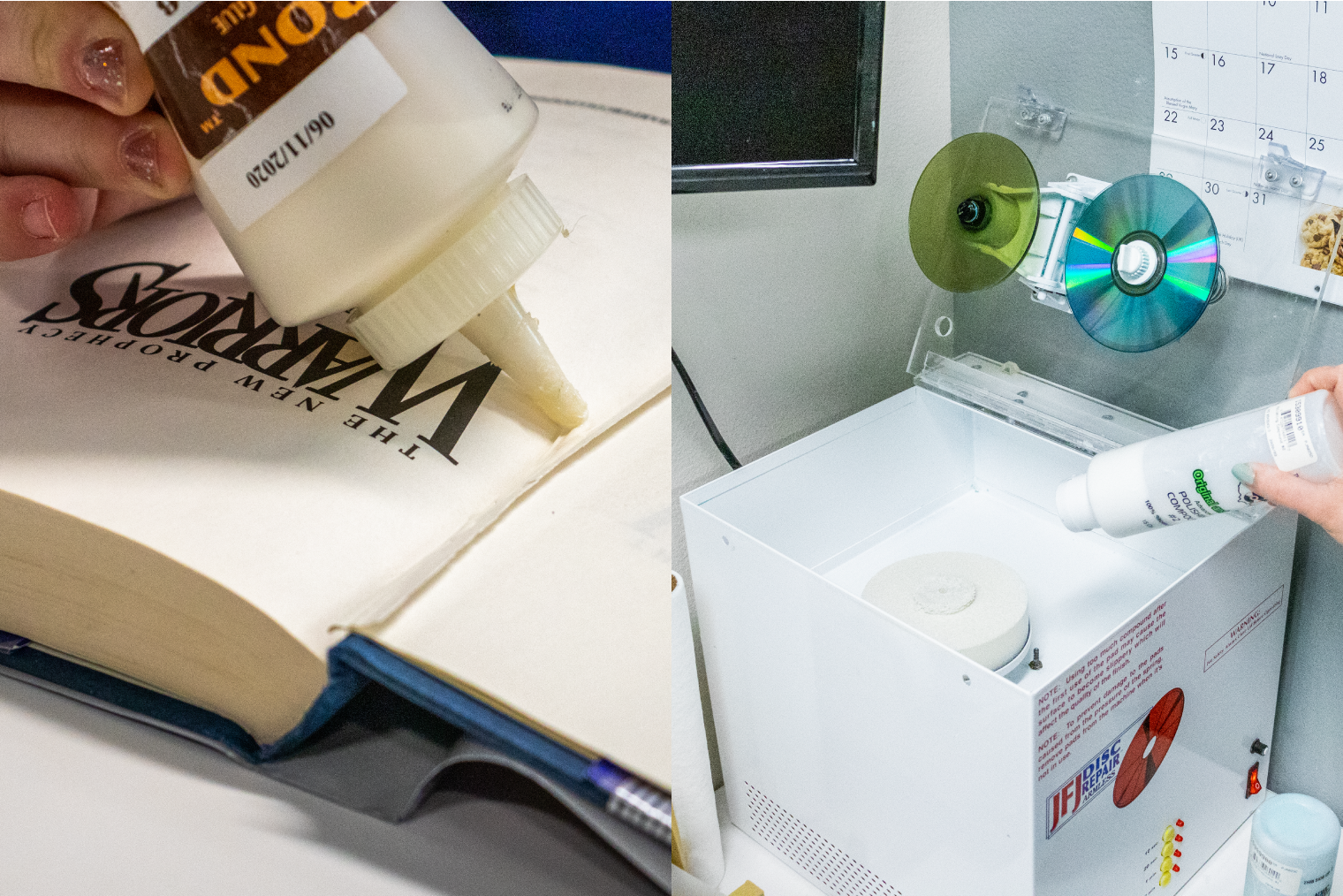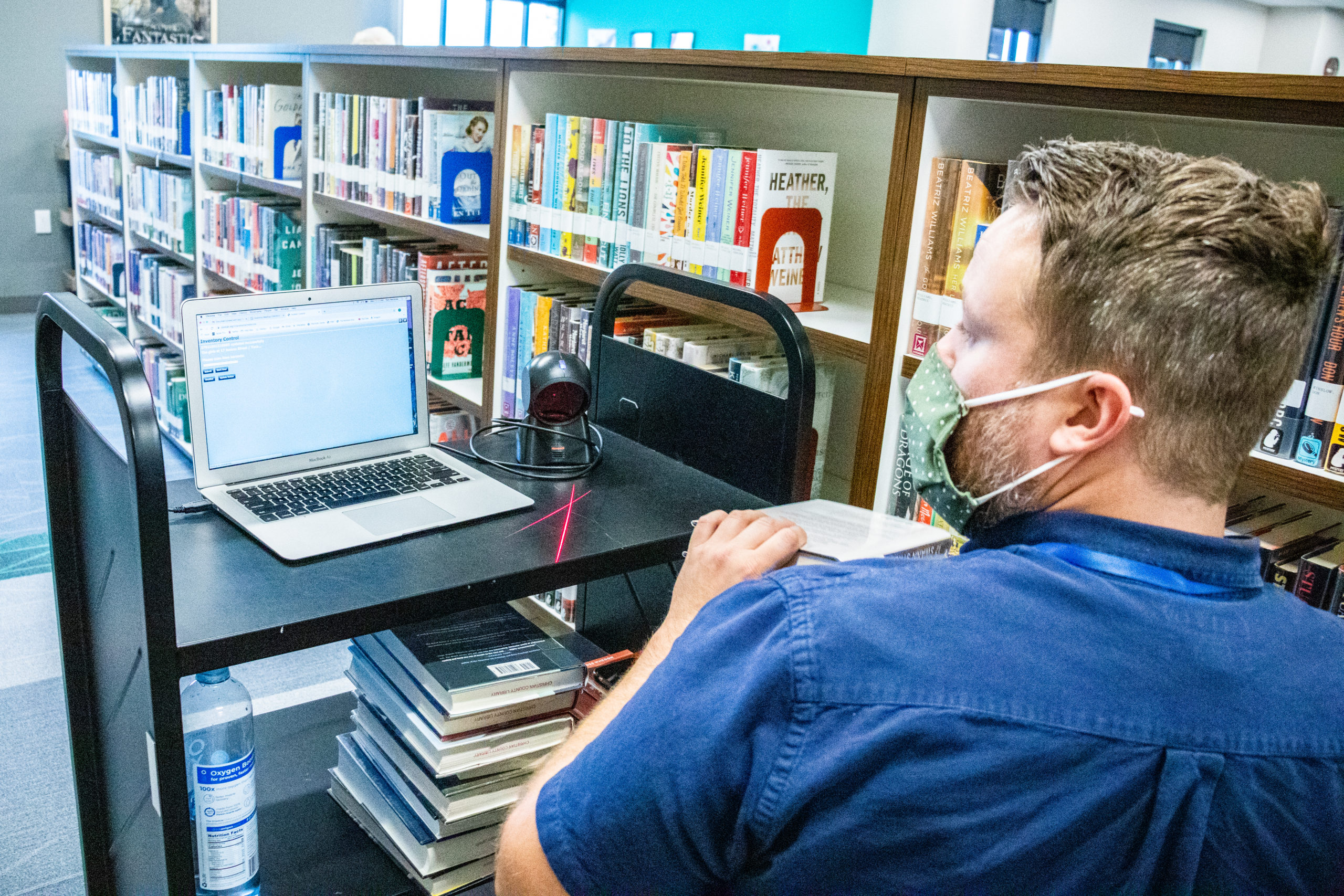
My day with Collection Services taught me, if nothing else, that every library item has a story. Be it a book, DVD, CD audiobook, Playaway, newspaper, magazine, board game, musical instrument, fishing pole or wifi hotspot, there’s care taken to make it available to the community.
Library Shopping Spree
 Each library item’s journey starts with Sarah, Director of Collection Services, because all incoming library materials are approved by her. “Everything?” I asked. She nodded and admitted that it’s a real balance to ensure the library’s shelves aren’t ever too full or sparse. And, she said, the recent opening of two new Community Branches, Clever and Sparta, helps by providing more options for moving items around.
Each library item’s journey starts with Sarah, Director of Collection Services, because all incoming library materials are approved by her. “Everything?” I asked. She nodded and admitted that it’s a real balance to ensure the library’s shelves aren’t ever too full or sparse. And, she said, the recent opening of two new Community Branches, Clever and Sparta, helps by providing more options for moving items around.
Several factors go into what materials are added to the collection, such as if a lost item needs to be replaced, if a popular item needs more copies to meet demand or if an item meets the needs and wants of the community. “We are building a collection of materials for the present and the future,” Sarah said. “That includes adding print materials and digital materials.”
In order to get new book and DVD releases, Sarah uses a specialized website to preorder items two months ahead. And to make sure the shelves aren’t crammed, she and her team search the collection for items that are damaged, are no longer checked out or have outdated information.
But how does Sarah and her team know what the community wants? Well, that part’s up to you! Anyone can fill out this Suggest a Purchase Form, to add items to the collection. Having a connection with what your library offers is really as simple as that.
Going On Record
 After Sarah’s ordered an item, it’s up to Tom, Associate Director of Collection Services, to add it into the library’s cataloging system. He uses information supplied by the distributor or other libraries to add a record for the item. The details of this record are what you see when you search for a book on coolcat.org, such as:
After Sarah’s ordered an item, it’s up to Tom, Associate Director of Collection Services, to add it into the library’s cataloging system. He uses information supplied by the distributor or other libraries to add a record for the item. The details of this record are what you see when you search for a book on coolcat.org, such as:
Subject: Specific words or phrases about the item that, when clicked, provide a list of other similar items.
Genre: Some items fall into more than one genre or category. You can click these tags, too, to see related materials.
Series: This tag lets you know if the item you found belongs to a series.
Summary: Similar to the blurb on the back of a book, this tag is a good way to find out a title’s premise before you check it out.
 When Tom’s finished, every item that arrives at the library will already be in the system. This, Tom said, is what allows an item to be on the shelf on its release day.
When Tom’s finished, every item that arrives at the library will already be in the system. This, Tom said, is what allows an item to be on the shelf on its release day.
Getting the Stamp of Quality
An item may already be in the catalog, but it still needs some preparation before it sees the shelves. You’ve probably noticed how library materials differ from what’s at, say, a book store, by having spine labels, protective covers and genre stickers.

Library materials need to live a long life. Melissa, Collection Services Specialist, takes great care to apply covers and stickers, giving each item the special attention it needs to withstand the many checkouts ahead.
Watching Melissa work, I realized how important her job is. After all, every item is an investment into the community, so it’s vital to protect each one.
Mending a Broken Binding
 Much of Collection Services’ time goes toward processing new items, but what about books that have been well-loved and now are in need of repair?
Much of Collection Services’ time goes toward processing new items, but what about books that have been well-loved and now are in need of repair?
Whether it’s torn pages, worn binding or any other fixable damage, they try their best to make the item new again.
Melissa showed me how she uses glue to reinsert loose pages and fix bad binding. I met with Jen, Floating Library Assistant, who uses a big machine to buff scratched discs back to working order.
With many of the items that need repairs, specifically discs that skip or freeze, the community plays a substantial role. People who have had a problem with an item will know that all you have to do is let a library staffer know. The item is then shipped to Collection Services and promptly fixed.
The Library’s an Engine
 There’s so much that goes into what Collection Services does. During my time with them, Sarah mentioned that she likes to be in touch with every item the library circulates. It was clear to me that she and her team strive to know exactly what interactions the community is having with each item and that they want everyone to be represented in the materials the library offers.
There’s so much that goes into what Collection Services does. During my time with them, Sarah mentioned that she likes to be in touch with every item the library circulates. It was clear to me that she and her team strive to know exactly what interactions the community is having with each item and that they want everyone to be represented in the materials the library offers.
And then there are all the small details that go into Collection Services’ work, such as inventory. Tirelessly, they scan every single item on the shelves at each Community Branch to get an idea of what’s actually there.
Or the time they spend testing out different methods of repairing and protecting items, to see what works best.
Or the budgeting they do, to make sure that, in terms of the collection, money goes where it will best serve the community.
All this to say that if the library’s an engine, Collection Services is the oil that keeps it running soundly.
For more information about any of these services, contact Collection Services at (417) 724-6100.



